Q18 is not fully correct :P
Welcome to the Great Organic Chemistry Challenge kiddos. Let's see what you got. Give it your best shot. You should know that I don't have the answers to any of these questions. Don't bank on me. Wake out of your slumber and stop wasting time on optical isomerism. There are some places in questions where I will have to help you, but you must post queries on those portions first! Atleast I would know that you have tried yourself upto that point.
For all those indulging in optical isomerism, this speech(inspired by Sylvester Stallone from Spy Kids 3 : Game Over) :
"I'm coming back
To settle the score...
For imprisoning me
For uuusing me
So now...I'm going to take this to the next.level!!!"
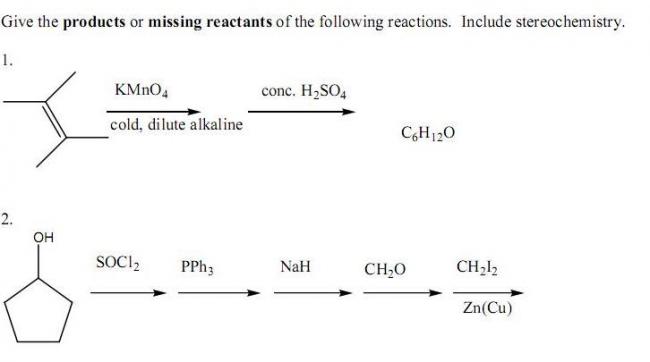
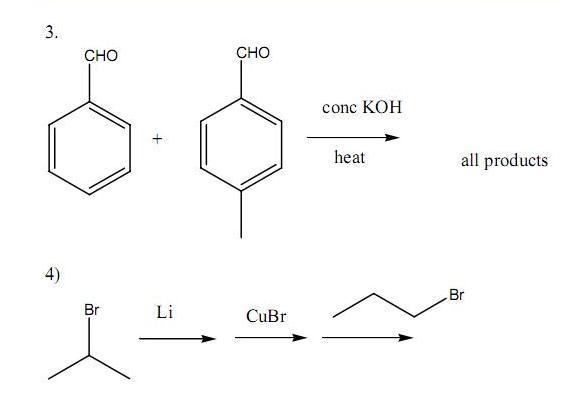
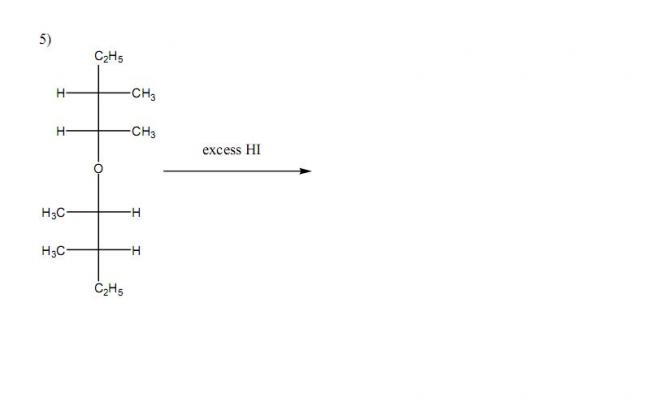
Q6. Using 1-propanol as the precursor compound, synthesise the following compounds in good yield(try using the shortest possible number of steps) -:
a) Hexan-3-one
b) 4,5-diethylocta-4-ene (high yield)
c) 4-ethylheptan-4-ol
d) hexan-1,4-diol
e) Methane
f) Crotonaldehyde
Q7. An unknown organic compound X, with molecular formula C6H10O3 is optically active(your love of optical activity has brought us to this conclusion, subho).
When X is reacted with acidic dichromate, it turns green.
When X is reacted with per-iodic acid, compound A with molecular formula C4H6O3 and B, C2H4O2 are formed.
B is found to be a carboxylic acid. A responds positively to Tollen's test and negatively to the iodoform test. Find X, A and B and identify the reactions and products.
Q8. 
A) Aqueous sulfuric acid
B) Mercuric acetate followed by reaction with Sodium borohydride
C) Diborane followed by hydrogen peroxide/NaOH
D) mCPBA followed by H2SO4
Q9. The major product obtained on reaction of CH3COCH2COOC2H5 with one equivalent NaH and one equivalent methyl iodide is?
Q10. The reaction of phenylacetylene with one equivalent of methyl magnesium bromide followed by reaction with benzaldehyde and hydrolysis yields?
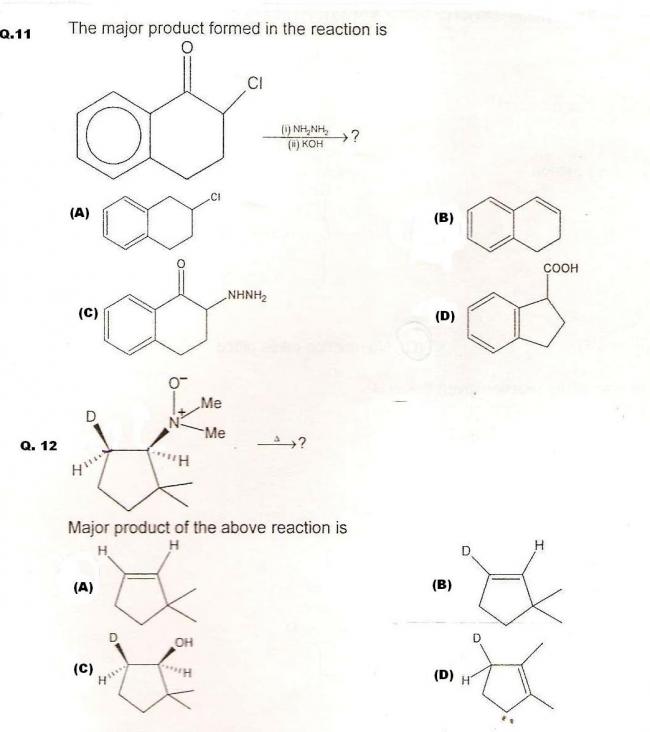
Q13. Which of the following organic compounds will not give foul odour of isocyanide on heating with chloroform and potassium hydroxide? (may be MCQ)
(A) para-methylaniline
(B) H2N - CH2 - COOH
(C) meta-aminobenzoic acid
(D) para-aminosulfonic acid
Q14. When α,Β-unsaturated cyclohexanone is reacted with (CH3)2CuLi and hydrolysed, the product obtained is?
Q15. Which compound undergoes decarboxylation on warming?
(A) Me-CO-COOH
(B) Me-CO-O-Et
(C) Me-CO-CH2COOH
(D) HO-CH2-COOH
Q16. Which of the following reacts with ammoniacal AgNO3 solution? (MCQ)
(A) 1-butyne
(B) MeCHO
(C) HCOOH
(D) PhCOPh
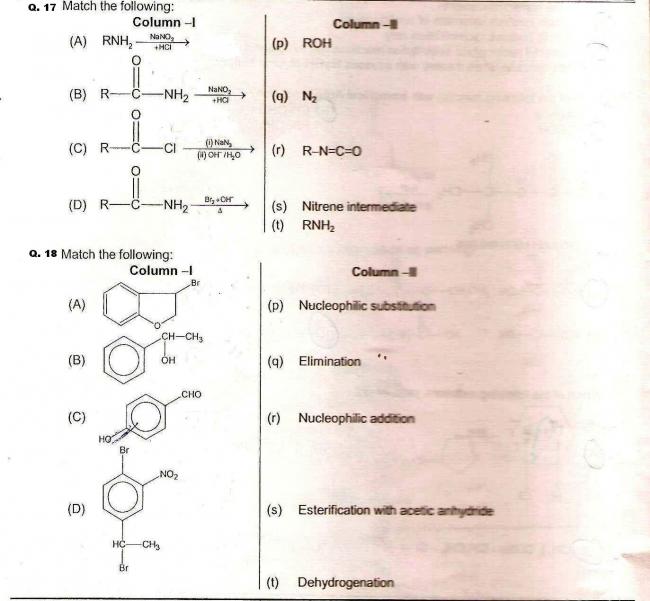
Q19. Explain why gyloxal gives the Tollen's test but not the Fehling's or Benedict's test.
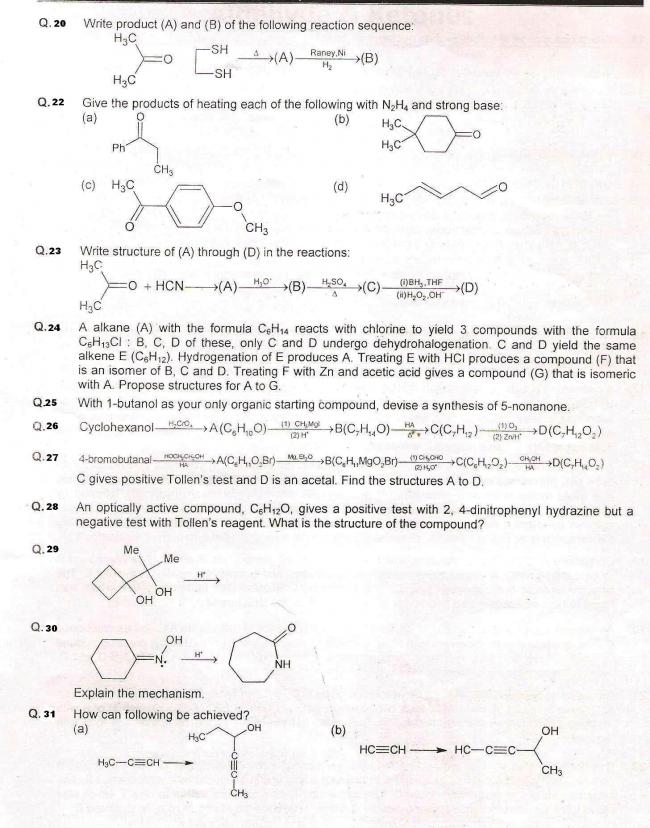
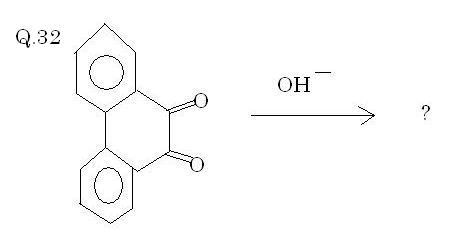
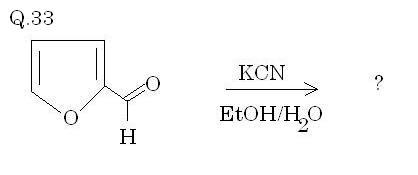

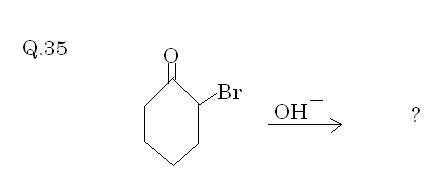
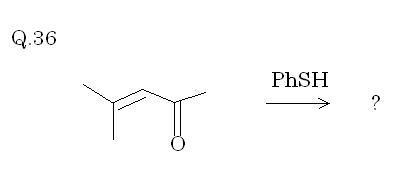
Q37. An organic compound A(C8H16) on ozonolysis yields aldehydes (B) and (C). While (C) performs Cannizzaro reaction, (B) can undergo aldol condensation. B on treatment with excess HCHO in presence of base gives (D) with formula (CnH20O√n). (B) on treatment with red P+HI yields an alkane which contains 1°, 2°, and 4° carbon atoms. Find the structures.
Q38. An organic aliphatic compound (A) when treated with anhydrous ZnCl2 + conc HCl produces a turbidity in 7.5 minutes. (A) decolourises Br2 in CCl4. (A) when treated with ThO2 gives (B). (B) on treatment with 50% H2O2/HIO4 produced three aldehydes - (C), (D), and (E). (C) on treatment with 50% NaOH gave an alcohol of least molecular weight along with sodium salt of an acid (F). (F) is peculiarly capable of reducing Tollen's reagent. (D) on treatment with MeMgBr followed by hydrolysis gives a secondary alcohol of least molecular weight. The formula of (E) is C6H10O2.
(A) on treatment with H2O2/HCOOH produced a compound of molecular formula C9H20O3. (B) on hydrogenation using [RhCl(PPh)3] produces (G). (G) on ozonolysis produces (D) alongside (H). (H) on Clemmensen's reduction produces diethyl dimethyl methane. Identify A to H.
It would be unfair if I did not give some hints here.
1. ThO2 dehydrates alcohols almost exclusively by the Hoffmann route.
2. Hydrogenation by RhCl(PPh)3 or Wilkinson's catalyst exclusively reduces a terminal double bond without affecting internal unsaturations
More to come.
The one who posts the best answers will get a toffee.
Solved Questions/Credit/Hall of Fame :
Q1. Solved by ayush_gupta
Q4. Solved by AnkurG
Q3. Solved by AnkurG
Q8. Solved by AnkurG
Q12. Solved by Manmay (http://targetiit.com/profile/manmay-kumar-mohanty-4967.html)
Q5. Solved by Avik (http://targetiit.com/profile/avik-4025.html)
Q13. Solved by Manmay (" ")
Q15. Solved by Avik (" ")
Q7. Solved by Avik(" ")
Q16. Solved by AnkurG
Q2. Solved by AnkurG
Q30. Solved by AnkurG and perfected by Avik
Q31. Solved by AnkurG
Q29. Solved by AnkurG
Q28. Solved by Avik
Q20. Solved by AnkurG
Q23. Solved by AnkurG
Q24. Solved by Avik
Q17. Solved by Manmay
Q22. Solved by Manmay
Q11. Solved by Manmay(Perfect!!)
Q32. Solved by AnkurG(Bloody brilliant I say)
Q35. Solved by AnkurG(fastest answer)
Q34. Solved by AnkurG(this is getting tedious indeed!)
Q33. Solved by Manmay
Q9. Solved by Avik
Q26. Solved by Avik
Q37. Solved by AnkurG
-
UP 0 DOWN 0 2 87

87 Answers
9) Final Product shud be this i think-

18) My answers are-
A-p,q
B-p,q,s,t
C-p,r,s
D-p,q
@Ankur... Had made the carbocation at the wrong place in Beckmann :P
Yes perfect ankur...you stole Avik's place in the HoF for this question!
@Manmay: Oh!! That's so nice!! I perplexed myself in ether cum carbonyl attacks ..
@Pritish: Is this name particular for furan-type compounds? ?
Very nice Manmay! But the reaction here would be called "furoin condensation".
Q33) is " benzoin condensation "
product is
jsut to add some more info abt BENZOIN CONDENSATION
CN- is used as a nucleophile as
(1) it has a gud nucleophilic character
(2) stabilises acidic H
(3) finally departs unlike other bases like OH-
Q35: simple favorskii reaction. Product: fivemembered ring projecting COO-
Q32: 
Ring contraction occurs here.
Reason: Initially, OH- attacks on one of carbonyl site, leaving no choice to that carbon but to detach itself from adjacent phenyl group (in anionic form).. this will attack another carbonyl site giving you five membered ring. And after altering, analyzing and mesmerizing you will get the answer as shown in fig
Q11)
proceed it as usual mechanism ,
u will get a structure like this → (b)
→ (b)
in Q2, I got something like this before last step:
CH2=cyclopentane .. correct me if I'm wrong. I'll proceed with last step and tell the mechanism till here.
Hmm...you seem to have a mighty strong point.
You're back in :P
Aur agar maan bhi lein chalo ki it won't oxidise the aldehyde, toh phir -OH group introduce karne ke liye double bond banana padegaa...which will eventually tautomerise back to >C=O.
Haven't heard Dichromate not oxidising aldehydes; infact i have used it often enuf ;O
Even ChemGuide agrees with me :P...
" The orange dichromate(VI) ions have been reduced to green chromium(III) ions by the aldehyde. In turn the aldehyde is oxidised to the corresponding carboxylic acid. "
( http://www.chemguide.co.uk/organicprops/carbonyls/oxidation.html )
Wow avik...you seem to have cracked it after all!
Ah no avik...tertiary alcohols are not oxidized by dichromate. Out of the HoF you go :P
12 --> b, coz Hoffman Elimination being E2 always tend to knock-out the warrior from opposite end, here H . The fact that D has good leaving tendency than H might contradict the fact but in E2 reaction the regioselectivity of E2 is always dominant over leaving-tendencies.
Correct me if i'm wrong.
Q8 -- c HBO process, for anti addition to least substituted position as required here.
Close but not close enough! Optical activity is lacking in X.




